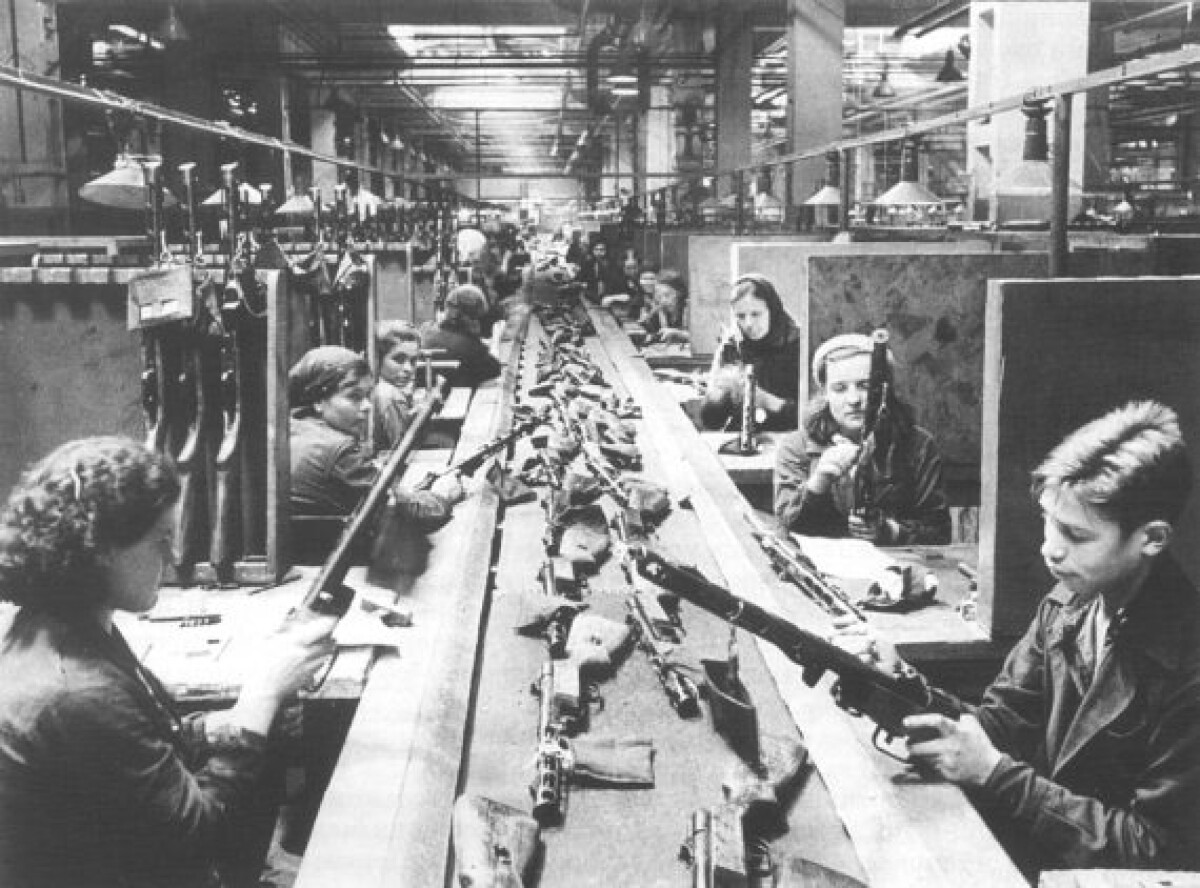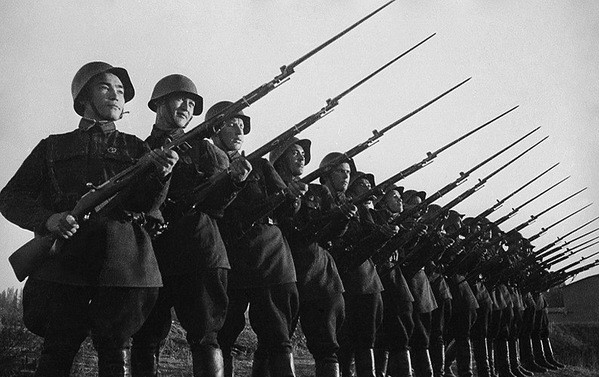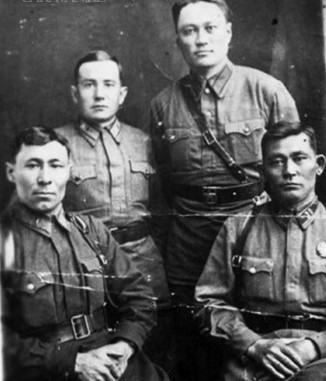
110 million people were drafted into the army of the belligerents. Military operations were conducted on the territory of 40 countries of Europe, Asia, Africa and four oceans.
The perfidious military attack by Hitlerite Germany on the western lands of the Soviet Union on June 22, 1941 started the Second World War and required immediate measures from the Soviet government and full support the army.
The outbreak of military conflict necessitated the restructuring of the economy into a war economy with the full mobilization of human and material resources. A great contribution to achieve the victory over the enemy was made by the Qazaq SSR (at present time Qazaqstan), despite the fact that before the revolution, the Qazaq Great Steppe was considered to be a backward border of the Russian Empire. Qazaqstan, rich in natural resources, thanks to advanced industrial and economic development of the USSR, on the eve of the Second World War had already become a developed industrial-agrarian republic, which occupied the first place in the Union for the production of lead, the third - in coal mining. Creation of a number of metallurgical plants made a non-ferrous metallurgy become the leading industry of the Qazaq SSR.
Because of the war, plants and factories from the western regions of the USSR were relocated to Qazaqstan. This industry, created at a new place, in many ways predetermined the victory of the Soviet Union in the Second World War. In the first months of the war more than 140 industrial enterprises were evacuated to Qazaqstan, including 19 munitions factories. Before the war in Qazaqstan there were only three munitions factories and three specialized production units on the basis of the civilian enterprises.
It should be noted that, a lot of young Qazaq people voluntarily came to the military registration and enlistment offices with a request to send them to the front. The slogan “Everything is for the front; everything is for the Victory!” was put into practice everywhere.
During the Second World War Akmolinsk (the current name of Nur-Sultan) played an important role in the formation of military units and formations. Three rifle (310th, 29th, and 387th) and one cavalry divisions were formed here.
In the prewar years, in 1939, Akmolinsk became the regional center, where lived 32000 inhabitants. By the beginning of the Second World War, it turned out into a relatively big city with big plants and factories. 41 enterprises were functioning in Akmolinsk, including: a power plant, a shoe factory, a central mixing plant, an industrial complex, a printing house, a timber mill, several grist-mills and others. The total number of workers was about 800 people. There were two polyclinics for 260 beds, a maternity hospital and an ambulance station in the city.
Such big factories as a pumping plant “Melitopol” and “Qazaqselmash” were opened in Akmolinsk. By 1944, almost 3,000 people were employed at 16 enterprises of the city. The urban population had rapidly increased. The population grew by over 80,5 thousand people by January 1, 1945, mainly due to forced migration. People from the combat areas were resettled to Akmolinsk.
The city authorities formed, hosted and deployed military units. Human resources for the front and possible defense against the enemy were prepared on a large scale.
There was a practice to send soldiers, who made heroic deeds on the front home for a short stay. Their task was to recruit new soldiers, to give people inspiration. Meetings with them were very popular. “For example, on August 14, 1943, Major Malik GABDULLIN, Hero of the Soviet Union, arrived in the city. He was granted a high state award at that time for a successful battle of the 8th Guards Panfilov Division”, says the historian Ziyabek Kabuldinov. – “The local Akmola newspaper “Stalin Tuy” wrote about this: “One of the important points of the stay of a Qazaq hero Malik Gabdullin in Qazaqstan was Akmolinsk”.

Major Malik GABDULLIN, Hero of the Soviet Union. Photo: apgazeta.kz
Today, residents of Nur-Sultan remember with gratitude the famous Qazaqstani heroes. They are: a twice Hero of the Soviet Union, fighter pilot Talgat BIGELDINOV, the first Minister of Defense of an independent Qazaqstan, a Hero of the Soviet Union Sagadat NURMAGAMBETOV, Halyk қaһarmany (the highest state award of Qazaqstan) Rakhymzhan KOSHKARBAEV. All these people were from Akmolinsk.
The 29th, 310th, 387th infantry divisions and the 106th national cavalry division were formed in the Akmola region.

Qazaq soldiers, The Second World War. Photo: maxpenson.com
In July 1941, the 310th Infantry Division was formed in Akmolinsk. It consisted mainly of recruits from the Akmola, Karaganda, Kokchetav, North Qazaqstan and Kustanai regions. The Division fought on the outskirts of Leningrad, at altitudes Sinyavino swamps.
In August 1941, the 387th Infantry Division was created, it consisted of recruits from Akmola and Karaganda regions. On December 27, under the village of Troitskoe, Oryol Oblast, this Division for the first time entered the battle. By early 1942, the Division was replaced to Stalingrad. Later, it participated in the battles for the Crimea and in the liberation of Sevastopol.
On December 15, 1941, the 29th Division was established in Akmolinsk. At the beginning of 1942 the Division was sent to Tula. In July 1942 the Division was redeployed to the Stalingrad sector. The soldiers found themselves in the thick of the battle for the city. For heroic services in the defense of Stalingrad, the 29th Infantry Division was transformed into the 72nd Guards Division. In the summer of 1943, its members participated in the battles of Kursk, near Belgorod, went through hard battles for Kharkov, liberated Europe (Romania, Transylvania, Hungary, Austria and Czechoslovakia).
On December 10, 1941, the 106th Qazaq Cavalry Division was formed. It was staffed by residents of Akmola, Petropavlovsk, Kustanai, Karaganda, East Qazaqstan, North Qazaqstan and Pavlodar regions. The division fought in the 6th Cavalry Corps.

The 106th Cavalry Division’s members. Photo: caravan.kz
In May 1942, the Division was almost destroyed in the battles near Kharkov. It could be said that no one survived. Part of the fighters became prisoners of the German camp “Dulag-205”. Those soldiers who survived went through the Soviet camps and tried to keep quiet about their exploits and tragedies. The documents of that Division were hastily destroyed during the encirclement. There is no documentary material about the heroism and tragedy of the 106th Cavalry Division.
- More than 300 thousand people died in the terrible battle in Kharkov, not counting those who went missing. More than 250 thousand people were taken prisoner, and about 22 thousand officers and soldiers stayed alive after it,” Ziyabek Kabuldinov says.
During all the years of the war 9783 soldiers went to the front from Akmolinsk, 7414 never came back home.
38 warriors from Akmola region were awarded the title of the Hero of the Soviet Union, seven were awarded orders of Glory of all three degrees, a number of them became full holders of the Order of Glory.
